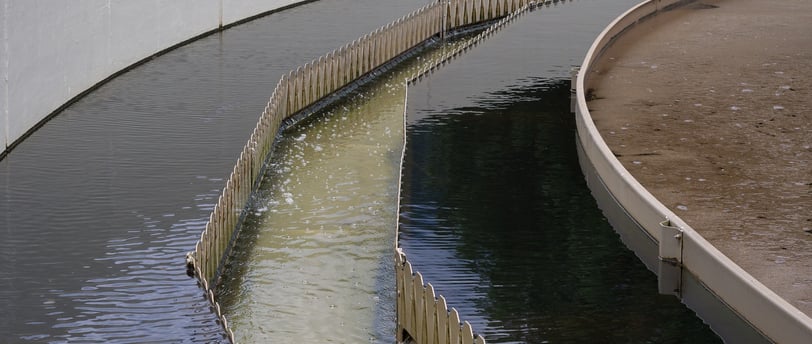Heavy Metals Remediation
Using Biochar to Remove Heavy Metals from Soil and Water
BIOCHAR


Introduction
Heavy metal contamination in soil and water has become an increasingly pressing environmental challenge, resulting from a myriad of activities including industrial waste disposal, mining operations, agricultural runoff, and urban pollution. Toxic metals such as lead (Pb), cadmium (Cd), mercury (Hg), and arsenic (As) pose significant risks not only to human health but also to ecosystems and biodiversity. The persistence of these metals can lead to bioaccumulation in the food chain, resulting in severe health impacts ranging from neurological disorders to cancer. Thus, finding effective remediation strategies is crucial.
Among the myriad of approaches being researched and implemented, biochar—the carbon-rich material produced through the pyrolysis of biomass—has emerged as a resilient and eco-friendly solution for heavy metal remediation. Its unique physical and chemical properties allow biochar to adsorb and immobilize heavy metals, thereby preventing them from leaching into groundwater or entering the food chain.
What is Biochar?
Biochar is a specific type of charcoal created by thermally degrading organic material, such as wood, crop residues, or agricultural waste, in a low-oxygen environment at high temperatures, typically ranging from 300 to 700 degrees Celsius. This pyrolysis process generates a highly porous structure that significantly increases the surface area of the material, enabling biochar to effectively capture and retain contaminants, including heavy metals, through various physical and chemical interactions.
How Does Biochar Remove Heavy Metals?
The capacity of biochar to remove heavy metals from soil and water involves multiple mechanisms:
1. Adsorption: The large surface area and diverse functional groups on the biochar's structure facilitate the adsorption of heavy metals. This process occurs as metal ions bind to the porous surfaces, significantly reducing their bioavailability in the environment.
2. Ion Exchange: Biochar has the ability to exchange its own ions with metal ions present in the contaminated media. This ion exchange mechanism aids in reducing the toxicity of these metal ions, thereby mitigating their harmful effects on both soil health and water quality.
3. pH Modification: The application of biochar can lead to an increase in soil pH. This alteration can affect the solubility of various heavy metals, often decreasing their availability in soil, especially for metals like cadmium and lead, which tend to be more soluble in acidic conditions.
4. Formation of Complexes: Biochar interacts with metal ions to form stable, non-toxic complexes. These complexes often render heavy metals less mobile and less toxic, effectively reducing the risk of leaching into surrounding environments.
5. Redox Reactions: Certain types of biochar have demonstrated the ability to alter the oxidation states of specific metals, thus making them less soluble and less harmful.
Examples of Biochar in Heavy Metal Remediation
1. Removing Lead (Pb) from Contaminated Soil: Research indicates that biochar sourced from agricultural wastes such as rice husks and corn stalks is particularly effective in reducing lead levels in polluted soils. The lead ions adhere to the biochar particles, significantly diminishing their availability for plant uptake, a method that has been implemented in urban gardens and industrial sites to enhance soil safety for agricultural practices.
2. Treating Arsenic (As) in Groundwater: Biochar produced from coconut shells and sawdust has shown promise in the removal of arsenic from contaminated groundwater supplies. In regions like Bangladesh and India, where arsenic poses a significant public health hazard, biochar filtration systems are being assessed as a cost-effective solution for providing clean drinking water to communities.
3. Cadmium (Cd) Removal in Agricultural Fields: Cadmium contamination, often resulting from fertilizers and industrial waste, can be detrimental to crop safety, particularly in rice production. Studies indicate that bamboo-derived biochar effectively reduces cadmium mobility in contaminated soil, thereby lowering the risk of human exposure through dietary intake.
4. Mercury (Hg) Remediation in Water Bodies: Biochar derived from animal manure has been employed in wastewater treatment facilities to capture mercury. Its high sulfur content plays a crucial role in binding mercury, preventing its release into aquatic ecosystems, where it can have catastrophic effects on marine life and human health through biomagnification.
Advantages of Using Biochar for Heavy Metal Removal
- Eco-Friendly: Biochar utilizes natural, renewable biomass materials, aiding in waste reduction.
- Cost-Effective: The production and application of biochar are generally more affordable than conventional treatment methods for water and soil contamination.
- Long-Term Stability: The heavy metals adsorbed onto biochar remain immobilized, significantly decreasing the likelihood of recontamination.
- Soil Improvement: In addition to removing toxins, biochar enhances soil fertility, boosts microbial activity, and supports healthy plant growth, enriching overall soil health.
Challenges and Considerations
Despite its advantages, several challenges need to be addressed for the widespread application of biochar:
- Variability in Biochar Properties: The effectiveness of biochar can differ based on the feedstock used and the specific conditions of the pyrolysis process. Not all biochar is created equal, and its performance can be influenced consequently.
- Heavy Metal Desorption Risk: Under certain environmental conditions, some heavy metals may be released back into the soil or water from biochar, potentially reversing the benefits achieved.
- Scaling Up: The transition to large-scale applications of biochar necessitates substantial infrastructure investments and supportive policy measures to facilitate its integration into existing soil and water management practices.
Conclusion
Biochar is emerging as a sustainable and effective tool for the remediation of heavy metals in both soil and water environments. With ongoing research and technological advancements, biochar holds the potential to play a crucial role in global environmental remediation strategies. Stakeholders including governments, farmers, and industrial leaders are increasingly turning their attention to biochar as a viable option for combating pollution while simultaneously enhancing soil health and water quality. As the world seeks innovative, affordable, and environmentally friendly solutions for pollution control, biochar stands out as a promising choice that synergizes waste management, carbon sequestration, and environmental cleanup into a cohesive strategy for a healthier planet.
